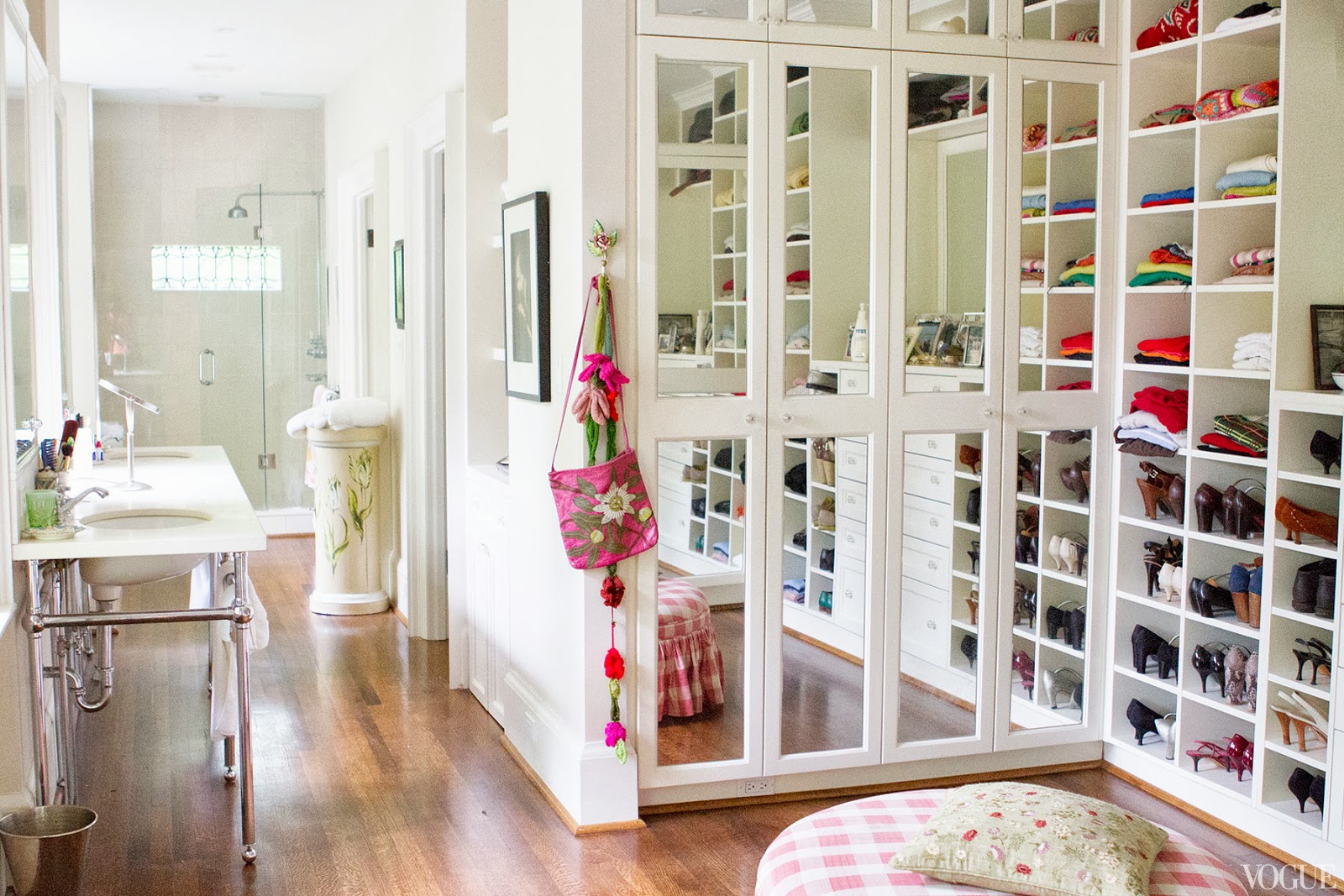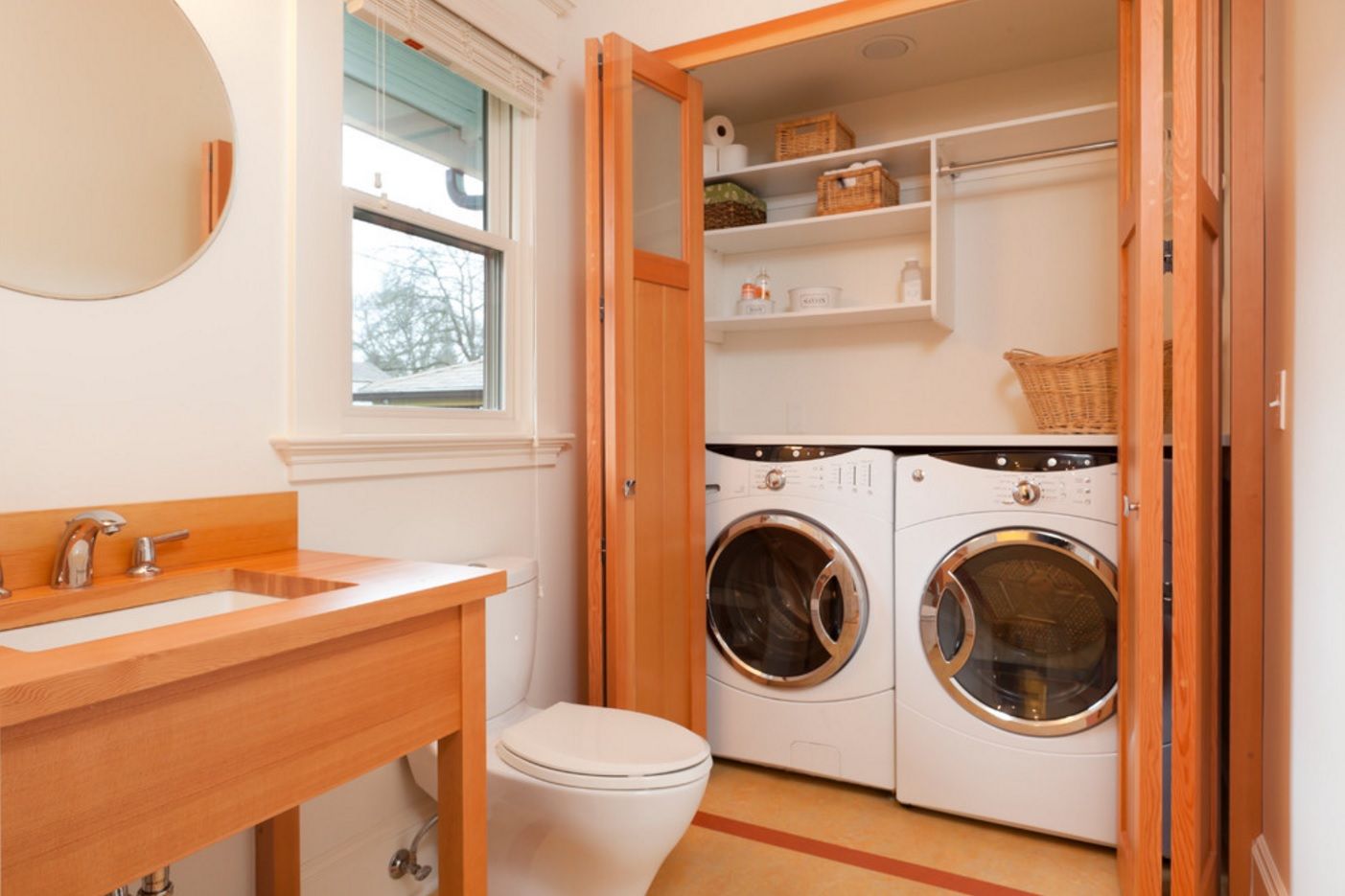Space Optimization and Layout
Combining a bathroom and laundry room presents unique challenges in terms of space optimization. Maximizing every inch is crucial to create a functional and aesthetically pleasing environment. This section will explore effective strategies for organizing laundry appliances, bathroom fixtures, and incorporating storage solutions to ensure a well-designed space.
Organizing Laundry Appliances and Bathroom Fixtures
Strategic placement of laundry appliances and bathroom fixtures is essential for maximizing space and functionality. A well-planned layout ensures easy access and movement within the combined room.
- Consider a Stacked Washer and Dryer: Stacking laundry appliances vertically saves valuable floor space. This configuration is particularly useful in smaller rooms, allowing for more room for other necessities.
- Utilize Wall Space: Mounting a bathroom vanity on the wall rather than using a traditional cabinet frees up floor space. This design allows for a more spacious and airy feel.
- Maximize Corner Space: Utilize corners effectively by incorporating corner cabinets or shelves. This strategy maximizes storage space without sacrificing valuable floor area.
- Choose Compact Fixtures: Opt for compact bathroom fixtures, such as a smaller toilet or shower stall, to create more usable space.
Incorporating Storage Solutions
Efficient storage solutions are key to maintaining a tidy and organized combined bathroom and laundry room.
- Cabinets and Drawers: Cabinets and drawers provide ample storage for cleaning supplies, toiletries, and laundry essentials. Consider incorporating cabinets with adjustable shelves to accommodate items of varying sizes.
- Open Shelving: Open shelving is a visually appealing and accessible storage solution. Utilize shelves for displaying decorative items, towels, and frequently used laundry supplies.
- Wall-Mounted Storage: Wall-mounted shelves, baskets, and hooks can maximize vertical space and minimize clutter. Utilize these solutions for storing towels, robes, and other items.
- Utilize the Space Above the Washer and Dryer: The space above the laundry appliances can be used for storage. Consider adding shelves or cabinets to maximize this often-overlooked area.
Laundry Appliances and Features: Bathroom Laundry Room Ideas
The heart of any laundry room is its appliances. Selecting the right washer and dryer can significantly impact your laundry experience, from efficiency and convenience to energy consumption and longevity. Understanding the various options available and their features is crucial to making an informed decision.
Types of Washing Machines
Choosing the right washing machine depends on factors such as space, budget, and laundry habits. Here’s a breakdown of common types:
- Top-Loading Washers: These machines are known for their affordability and ease of use. They typically have a larger capacity than front-loaders and are well-suited for bulky items like comforters. However, they often use more water and energy than front-loaders.
- Front-Loading Washers: These energy-efficient machines use less water and energy than top-loaders. They are also known for their gentle cleaning action, making them ideal for delicate fabrics. However, they tend to be more expensive and can be more challenging to load.
- High-Efficiency (HE) Washers: Both top-loading and front-loading washers can be HE models. These machines use significantly less water and energy, leading to lower utility bills and a smaller environmental footprint. They often require specific HE detergents to function effectively.
Types of Dryers
Dryers come in various types, each with its advantages and disadvantages:
- Electric Dryers: These dryers are the most common type, known for their affordability and ease of use. They are powered by electricity and typically have a higher operating cost than gas dryers.
- Gas Dryers: Gas dryers are generally more energy-efficient and can heat up faster than electric dryers. However, they require a gas line installation, which can be expensive.
- Heat Pump Dryers: These dryers use a heat pump system to dry clothes, resulting in lower energy consumption than traditional dryers. They are typically more expensive upfront but can save money on utility bills over time.
Stacked Washer and Dryer Units
Stacked washer and dryer units are a popular choice for small bathrooms or laundry rooms. They save valuable floor space by placing the dryer on top of the washer.
- Space-Saving: Stacked units maximize vertical space, allowing for more efficient use of a compact area.
- Convenience: They are typically compact and easy to maneuver, making them suitable for small spaces.
- Aesthetics: Many models are available in sleek and modern designs, blending seamlessly into various bathroom aesthetics.
Integrating Laundry Appliances into Bathroom Design
Seamlessly integrating laundry appliances into a bathroom design can enhance the overall aesthetic and functionality of the space.
- Custom Cabinetry: Encasing the washer and dryer within custom cabinetry can create a cohesive and integrated look. This allows for seamless storage solutions and a polished appearance.
- Built-in Shelves: Utilizing built-in shelves above the washer and dryer provides convenient storage for laundry supplies, towels, and other bathroom essentials. This maximizes vertical space and minimizes clutter.
- Matching Finishes: Selecting appliances and cabinetry in complementary finishes can create a cohesive and stylish bathroom design. For example, stainless steel appliances can complement brushed nickel cabinet hardware, while white appliances can match white cabinetry.
Bathroom Design and Functionality

When designing a bathroom laundry room combination, incorporating a functional bathroom area is essential. This section explores the importance of bathroom features, design tips for comfort and functionality, and ideas for incorporating decorative elements.
Incorporating Essential Bathroom Features
A well-designed bathroom within a combined space should include essential features like a shower, bathtub, and vanity. These elements contribute to both functionality and aesthetics.
* Shower: A shower is a necessity for personal hygiene and provides a quick and efficient way to clean. Consider incorporating a shower stall or a shower-tub combination to save space.
* Bathtub: A bathtub offers a relaxing and rejuvenating experience. If space allows, a soaking tub can be a luxurious addition to the combined space.
* Vanity: A vanity provides storage for toiletries and creates a dedicated space for personal grooming. A well-designed vanity can enhance the bathroom’s functionality and aesthetics.
Designing a Comfortable and Functional Bathroom Area
Creating a comfortable and functional bathroom area within a combined space requires careful consideration of design elements.
* Lighting: Adequate lighting is crucial for performing daily tasks and enhancing the overall ambiance. Natural light should be maximized whenever possible. Consider using a combination of overhead lighting and task lighting for specific areas, such as the vanity mirror.
* Ventilation: Proper ventilation is essential to prevent moisture buildup and maintain a healthy environment. Installing an exhaust fan that vents to the exterior is recommended.
* Accessibility: Accessibility is essential for all users, especially those with mobility limitations. Ensure the bathroom area is designed with adequate space for maneuvering and includes grab bars and non-slip surfaces.
Incorporating Decorative Elements
Adding decorative elements can enhance the bathroom’s style and create a cohesive look with the laundry room.
* Tile Patterns: Tile patterns can add visual interest and define different areas within the combined space. Consider using different tile sizes, shapes, and colors to create a unique and stylish look.
* Paint Colors: Choosing the right paint color can transform the bathroom’s ambiance. Light and neutral colors can make the space feel larger and brighter, while bolder colors can create a more dramatic effect.
* Bathroom Accessories: Bathroom accessories, such as towels, rugs, soap dispensers, and toothbrush holders, can add personality and functionality to the space. Choose accessories that complement the overall design and create a cohesive look.
Color Schemes and Design Styles

The color palette and design style you choose for your combined bathroom and laundry room can significantly impact the overall feel and functionality of the space. Careful consideration of color and style will help create a cohesive and inviting atmosphere that reflects your personal preferences.
Color Palette Selection
Color choices have a profound influence on the perceived size, mood, and functionality of a space. Light colors, such as white, cream, and light blues, can make a room feel larger and brighter, while darker colors, such as navy, gray, and brown, can create a more intimate and cozy atmosphere.
Here are some color palette examples that work well for combined bathroom and laundry rooms:
- Light and airy: White walls with accents of light blue or green. This palette creates a clean and spacious feel, perfect for a small bathroom and laundry room.
- Warm and inviting: Cream walls with accents of warm brown or terracotta. This palette creates a cozy and inviting atmosphere, perfect for a larger bathroom and laundry room.
- Modern and sophisticated: Gray walls with accents of black, white, or metallics. This palette creates a sleek and modern feel, perfect for a contemporary bathroom and laundry room.
- Rustic and charming: White or cream walls with accents of natural wood tones and soft greens. This palette creates a rustic and charming feel, perfect for a farmhouse-style bathroom and laundry room.
Design Styles, Bathroom laundry room ideas
The design style you choose for your combined bathroom and laundry room will influence the overall look and feel of the space. Here are some popular design styles and their application to this type of space:
- Modern: Modern design emphasizes clean lines, minimalist aesthetics, and a focus on functionality. In a combined bathroom and laundry room, this style might feature sleek cabinetry, chrome fixtures, and a focus on open storage.
- Traditional: Traditional design emphasizes classic elements, such as ornate details, rich colors, and natural materials. In a combined bathroom and laundry room, this style might feature wooden cabinetry, brass fixtures, and a focus on decorative accents.
- Farmhouse: Farmhouse design emphasizes rustic charm, natural materials, and a focus on functionality. In a combined bathroom and laundry room, this style might feature distressed wood cabinetry, white subway tile, and a focus on open storage.
- Industrial: Industrial design emphasizes exposed elements, raw materials, and a focus on functionality. In a combined bathroom and laundry room, this style might feature metal shelving, exposed brick walls, and a focus on open storage.
